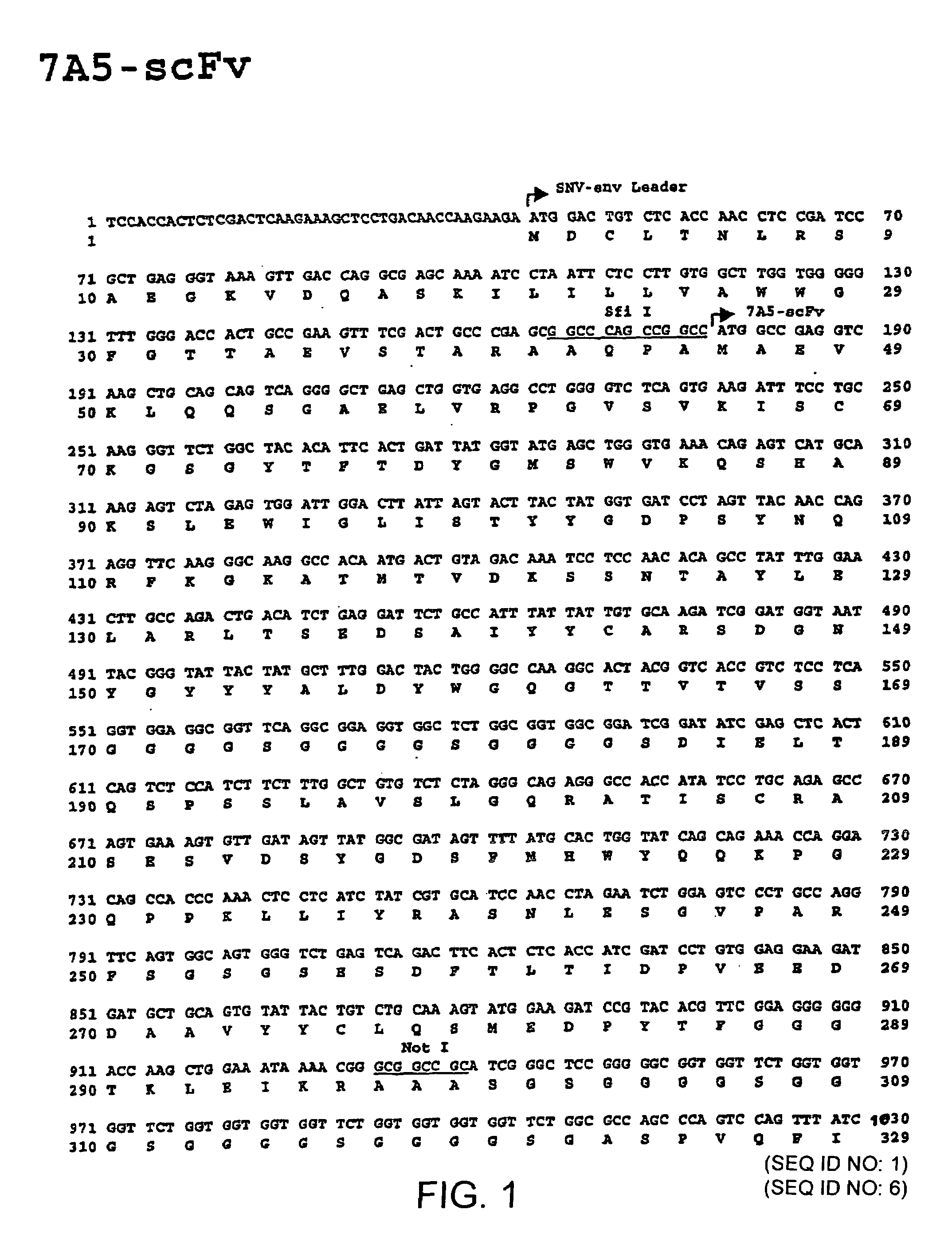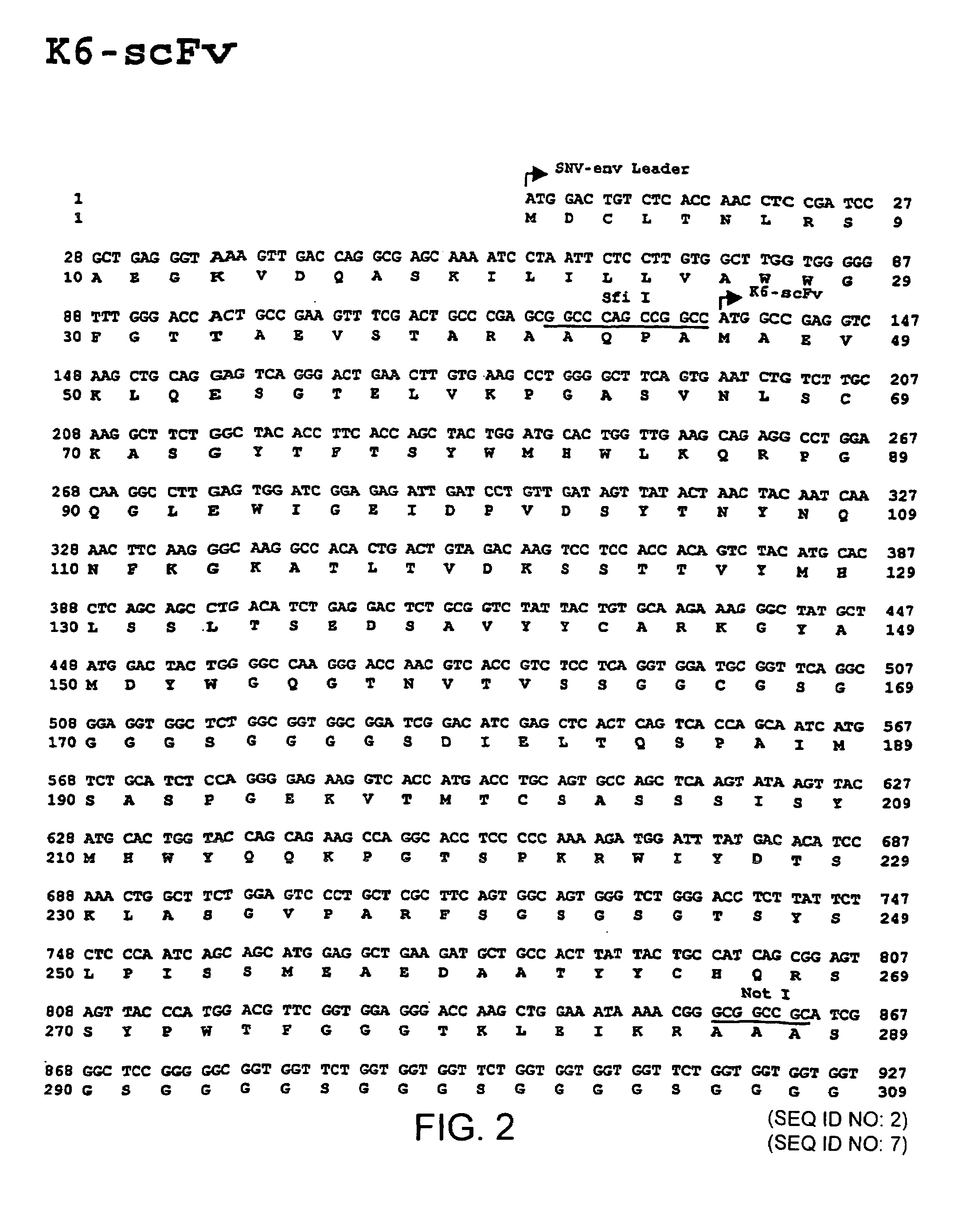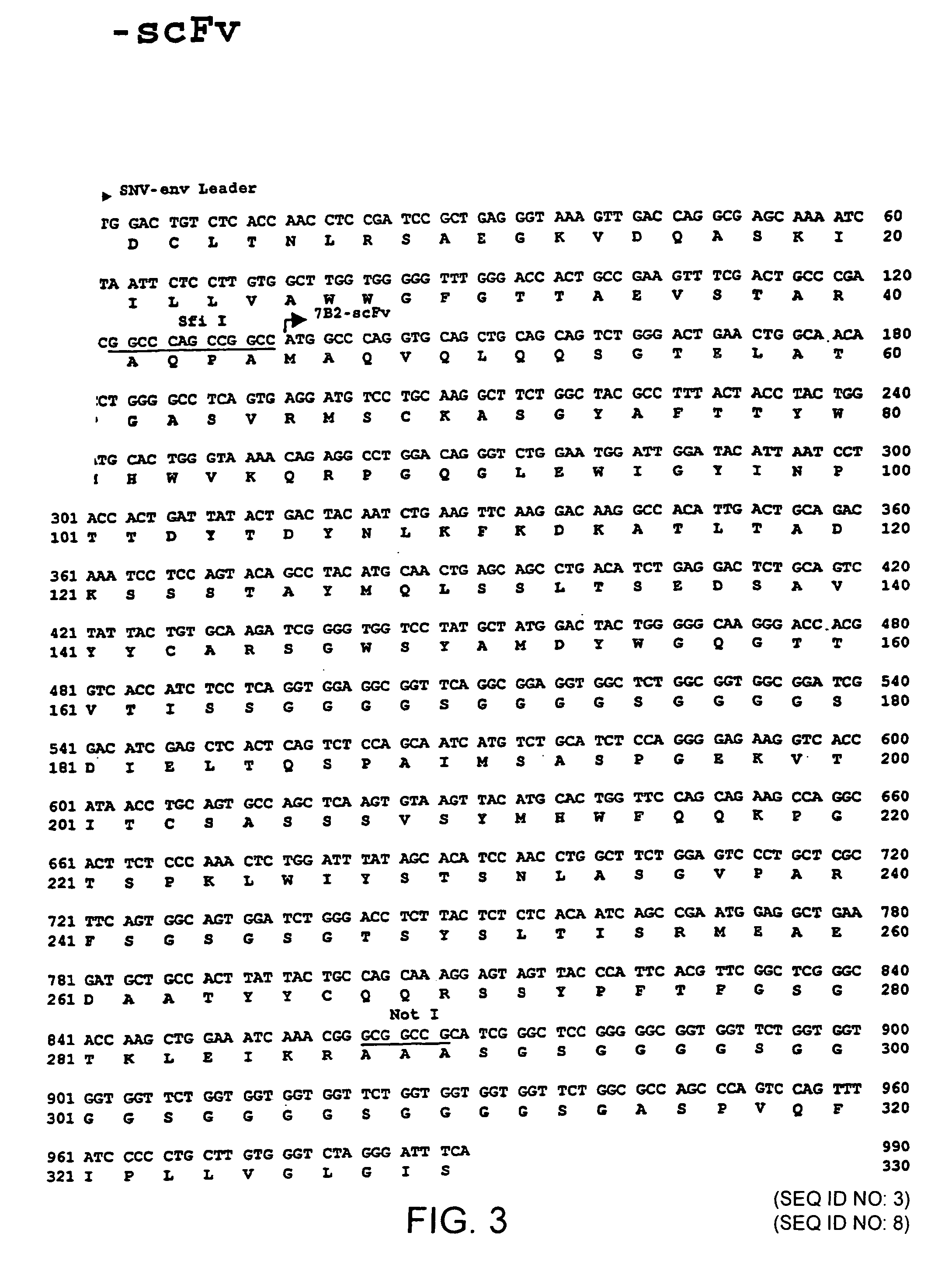Gene transfer in human lymphocytes using retroviral scFv cell targeting
a technology of human lymphocytes and retroviral cells, applied in the direction of genetic material ingredients, drug compositions, immunological disorders, etc., can solve the problem of no vectors described
- Summary
- Abstract
- Description
- Claims
- Application Information
AI Technical Summary
Benefits of technology
Problems solved by technology
Method used
Image
Examples
example 1
Determination of the Vector Titers of 5 Selected scFv on D17, C8166 and HeLa Cells.
[0028]For this purpose cell culture supernatants were titered in three serial dilutions (1000 μl, 100 μl and 10 μl) in a total volume of 1000 μl by adding 30 μg / ml polybren on the cells (2×105 D17 and HeLa, 5×105 C8166). After a 1,5-2 h incubation period the vector containing supernatant was replaced by fresh medium.
[0029]Following 48 h an X-gal staining was used to detect transduced cells (Mikawa et al., 1992), and the blue cells were counted. Tab. 1 shows the vector titers of the 5 selected scFv on D17, C8166 and HeLa cells.
[0030]The titration on D17 (canine osteosarcoma cell line, Watanabe et al, 1983) functions as a positive control for the vector production. The titre of >106 i.U. / ml shows that all 5 scFv packaging cell clones deliver vector particles into the cell culture supernatant with about the same efficiency.
[0031]The titer on C8166 cells vary between 103 and 106 i.U. / ml depending on scFv,...
example 2
Further Characterization of the Vectors
[0033]For a detailed characterization, further transduction experiments were carried out with the vectors. In Table 2, the results of the 7A5 vectors are represented.
[0034]
TABLE 2Transduction of different cell types by means of 7A5 and wild type vectorsTiter (i.U / ml)D17HeLaTE671HT1080293TC8166Molt4 / 8JurkatA301huPBMCWT>1061111111117A5>10621121 × 1051 × 1063 × 1051 × 1057.5 × 104
[0035]The transductions were carried out as described above. As a control, all cells were transdued with wild type vectors (WT). These are vector particles only containing the SNV Env wild type protein and no scFv. They are delivered from the starting packaging cell line DSH-cx1 (Chu & Dornburg, 1995, Jiang et al., 1998) into the culture supernatant. As expected, said vectors were not able to transduce human cells. Only the D17 cells which were permissive for them could be transduced with high efficiency.
[0036]The titration with 7A5 vectors showed an efficient transductio...
example 3
Transduction of Primary T Cells
[0038]For the transduction of primary T cells, primary human PBMC (“peripheral blood mononuclear cells”, the isolation of PBMC from blood by means of sucrose density gradient centrifugation is carried out according to standard methods) were isolated from blood.
[0039]After a three days stimulation by means of PHA (phytohemaggluttinin) and IL-2 the cell population consisted of 98% T lymphocytes (determined by FACS analysis with an antibody against T cell marker CD3 (state of the art).
[0040]The transduction of said cells by means of 7A5 vectors revealed an efficiency of 20% vector positive cells (or approx. 1×105 i.U. / ml). As a comparison, the transduction experiments were carried out with human B cells. These could be transduced 5 times less (approx. 4%) than T cells.
[0041]Further, stimulated human PBMC could be transduced also with K6 and 7B2 vectors (i.e. vectors encoding the single chain antibody fragment according to FIG. 2 or 3 or a portion thereof)...
PUM
| Property | Measurement | Unit |
|---|---|---|
| volume | aaaaa | aaaaa |
| volume | aaaaa | aaaaa |
| volume | aaaaa | aaaaa |
Abstract
Description
Claims
Application Information
 Login to View More
Login to View More - R&D
- Intellectual Property
- Life Sciences
- Materials
- Tech Scout
- Unparalleled Data Quality
- Higher Quality Content
- 60% Fewer Hallucinations
Browse by: Latest US Patents, China's latest patents, Technical Efficacy Thesaurus, Application Domain, Technology Topic, Popular Technical Reports.
© 2025 PatSnap. All rights reserved.Legal|Privacy policy|Modern Slavery Act Transparency Statement|Sitemap|About US| Contact US: help@patsnap.com



